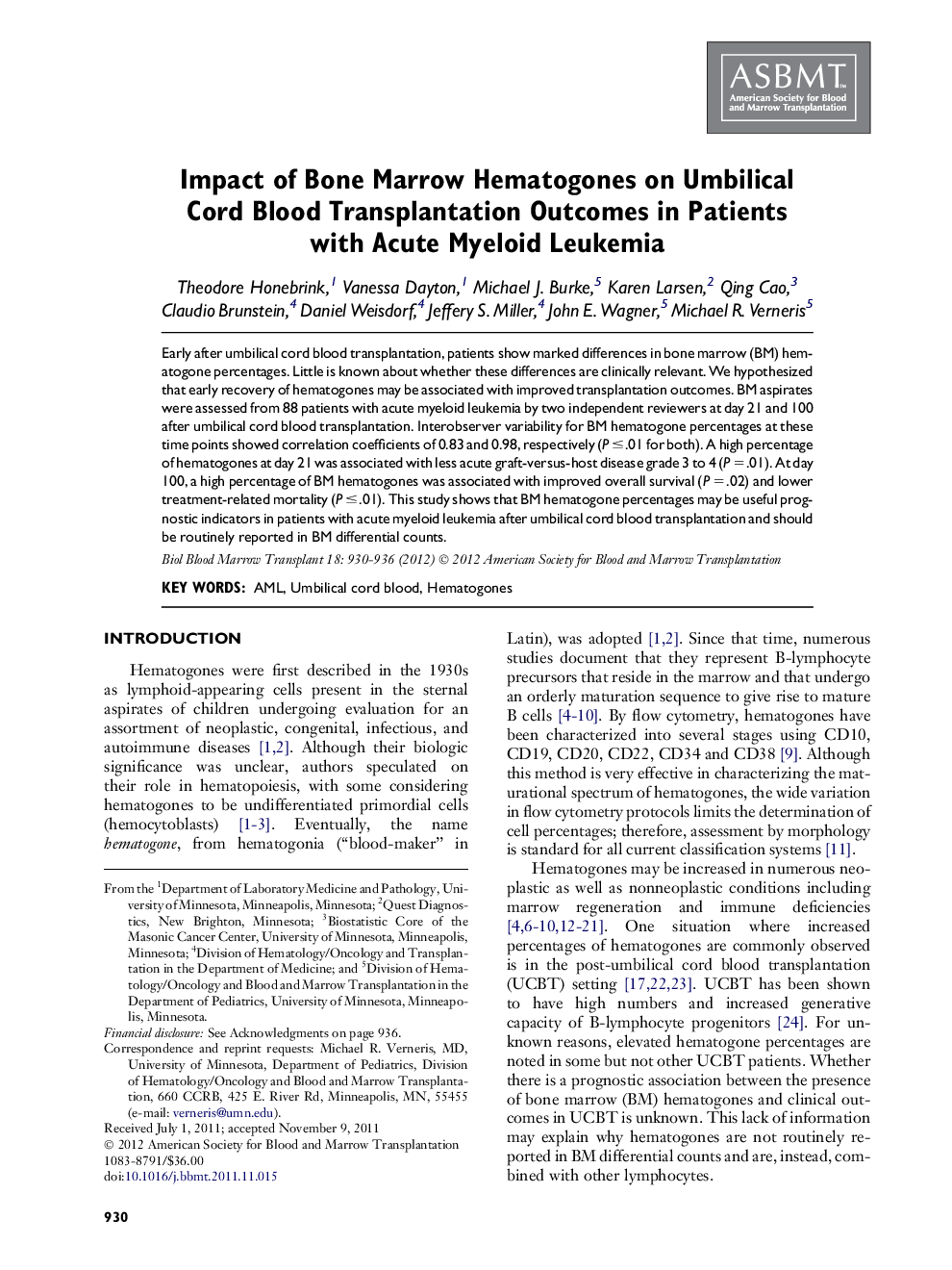| Article ID | Journal | Published Year | Pages | File Type |
|---|---|---|---|---|
| 2102590 | Biology of Blood and Marrow Transplantation | 2012 | 7 Pages |
Early after umbilical cord blood transplantation, patients show marked differences in bone marrow (BM) hematogone percentages. Little is known about whether these differences are clinically relevant. We hypothesized that early recovery of hematogones may be associated with improved transplantation outcomes. BM aspirates were assessed from 88 patients with acute myeloid leukemia by two independent reviewers at day 21 and 100 after umbilical cord blood transplantation. Interobserver variability for BM hematogone percentages at these time points showed correlation coefficients of 0.83 and 0.98, respectively (P ≤ .01 for both). A high percentage of hematogones at day 21 was associated with less acute graft-versus-host disease grade 3 to 4 (P = .01). At day 100, a high percentage of BM hematogones was associated with improved overall survival (P = .02) and lower treatment-related mortality (P ≤ .01). This study shows that BM hematogone percentages may be useful prognostic indicators in patients with acute myeloid leukemia after umbilical cord blood transplantation and should be routinely reported in BM differential counts.
